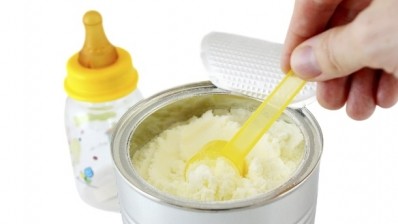When is it best to introduce complementary feeding for infants? Commission asks EFSA

The update will take a fresh look at a 2009 opinion from EFSA that differed from advice given by the World Health Organisation (WHO).
EFSA said complementary feeding could be safely introduced between the age of four and six months.
Meanwhile the WHO recommends infants be exclusively breastfed for the first six months of life to “achieve optimal growth, development and health”.
From this point it advises infants receive nutritionally adequate and safe complementary foods, while continuing to be breastfed for up to two years or beyond, to “meet their evolving nutritional requirements”.
WHO defines complementary feeding as “the process starting when breast milk alone is no longer sufficient to meet the nutritional requirements of infants, and therefore other foods and liquids are needed, along with breast milk”.
While many European countries follow this six-month recommendation, others say complementary feeding can be introduced between four and six months.
A spokesperson for the Commission told us the update came within the context of a new legal framework for food for specific groups of the population, which came into force on 20 July this year.
The update of the 2009 EFSA opinion aims to ensure that this is based on the latest available scientific evidence.
The opinion will dictate what target age group can be marked on labels of processed cereal-based food and baby food.
Asked if it was hoped this update would bring EFSA’s stance in line with the WHO’s, the spokesperson said it was "too early to say" and EFSA would first have to complete its work.
According to EFSA’s register of questions, the Parma-based authority has until the end of December 2017 to complete the report.
EFSA’s 2009 advice
EFSA's 2009 opinion stated that - "on the basis of present knowledge" - the introduction of complementary food into the diet of healthy term infants in the EU between the age of four and six months is “safe and does not pose a risk for adverse health effects”.
These health effects included both short-term problems like infections and slow or excessive weight gain and possible long-term effects like allergies and obesity.
It added that available data on the risk of celiac disease and type 1 diabetes mellitus also supported the introduction of food containing gluten not later than six months of age, preferably while still breastfeeding.
It concluded: “Exclusive breast-feeding provides adequate nutrition up to six months of age for the majority of infants, while some infants may need complementary foods before six months (but not before four months) in addition to breastfeeding in order to support optimal growth and development.”
Who says what - according to EFSA’s 2009 opinion
EU lowest breastfeeding rates
Last year WHO figures from 21 European countries showed only 13% of mothers exclusively feed their babies until six months – the lowest regional rate globally.
In south east Asia this rate was estimated at 43%.
This week is World Breastfeeding Week - an awareness campaign coordinated by the World Alliance for Breastfeeding Action (WABA), of which the WHO and UNICEF Global are members.
World #Breastfeeding Week starts today!
— WHO (@WHO) August 1, 2016
Support mums to breastfeed anytime, anywhere https://t.co/vlB9P3zVw9pic.twitter.com/ggaYMvFgoI
























